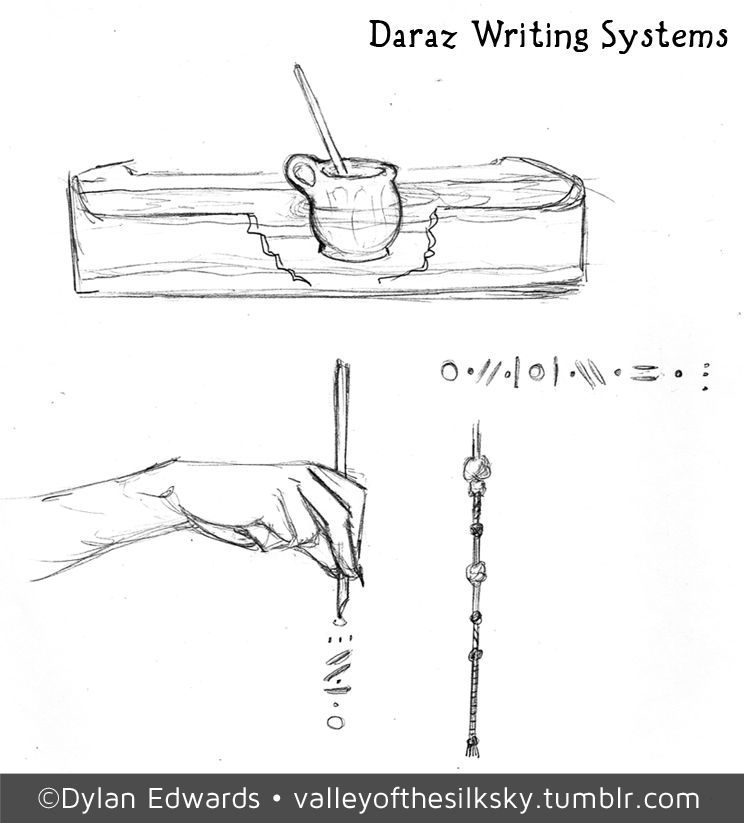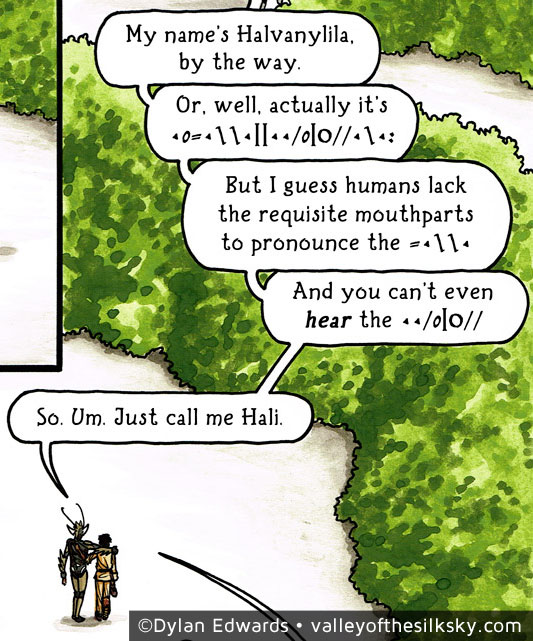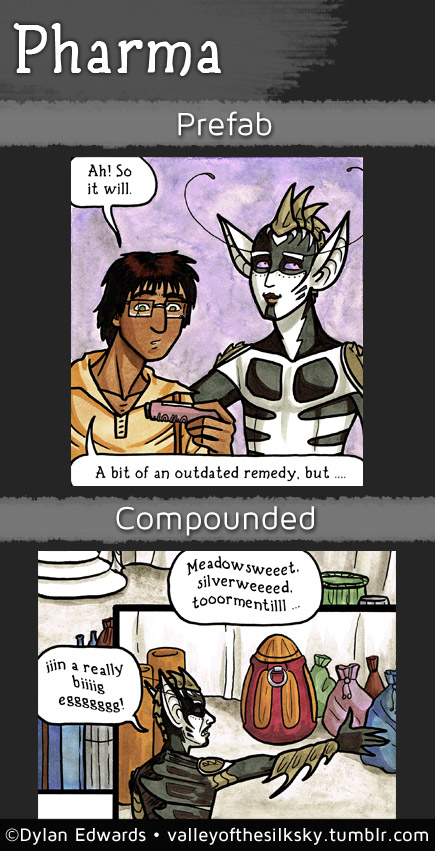 As discussed in the article on medicine, pharmaceuticals form a major part of the Pocali economy.
As discussed in the article on medicine, pharmaceuticals form a major part of the Pocali economy.
Medicinals are generally available in two forms: prefabricated or compounded.
Prefabrication works best for widely used remedies that can be mass-produced on some level (not dependent on rare ingredients, and used for treating relatively common ailments). These will typically come in tubes, many labeled in Rovari script in addition to Pocali, particularly for medicines used by both Daraz and Humans.
The majority of medicines, though, are compounded: made to order from raw ingredients per the individual’s specific medical needs. Because several different types of raw medicinals might have the same or similar effects, and the rarity of various medicinals makes large scale consistency difficult to achieve, in many cases it’s just easier to make something on the spot based on whatever ingredients are available in the region.
An apothecarist’s egg is basically a portable mini-pharmacy. A typical egg will contain raw ingredients, tinctures, extracts, and tools for mixing medicines or forming tablets.

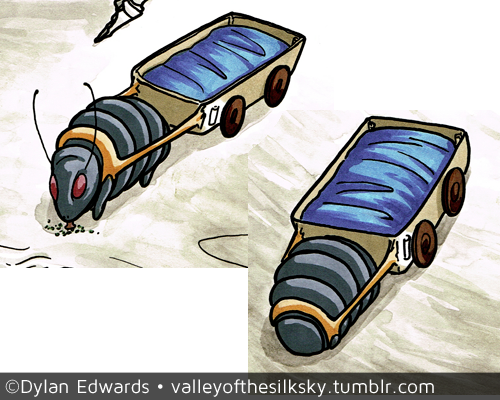 The names humans have for many of the flora and fauna of the Valley come from Rovari, the Daraz language (Daraz are native to the Valley, humans are not). This particular creature is called merev gombi in Rovari, which literally means “hard sphere.” Humans usually just call this animal “merev.”
The names humans have for many of the flora and fauna of the Valley come from Rovari, the Daraz language (Daraz are native to the Valley, humans are not). This particular creature is called merev gombi in Rovari, which literally means “hard sphere.” Humans usually just call this animal “merev.” 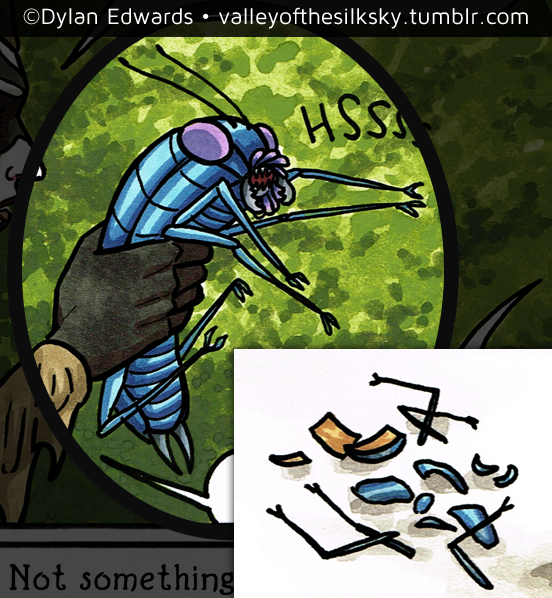 Ah, the humble blue beetle, such a common sight in the Valley it gets the most obvious possible name. It’s also one of the main sources of animal protein for the citizens of Pocalo. So delicious, so nutritious.
Ah, the humble blue beetle, such a common sight in the Valley it gets the most obvious possible name. It’s also one of the main sources of animal protein for the citizens of Pocalo. So delicious, so nutritious.